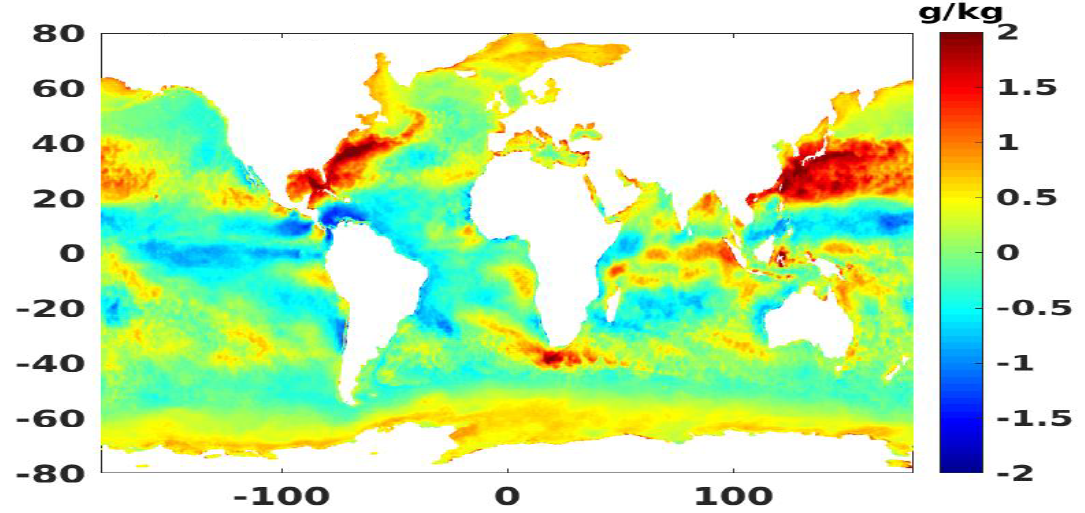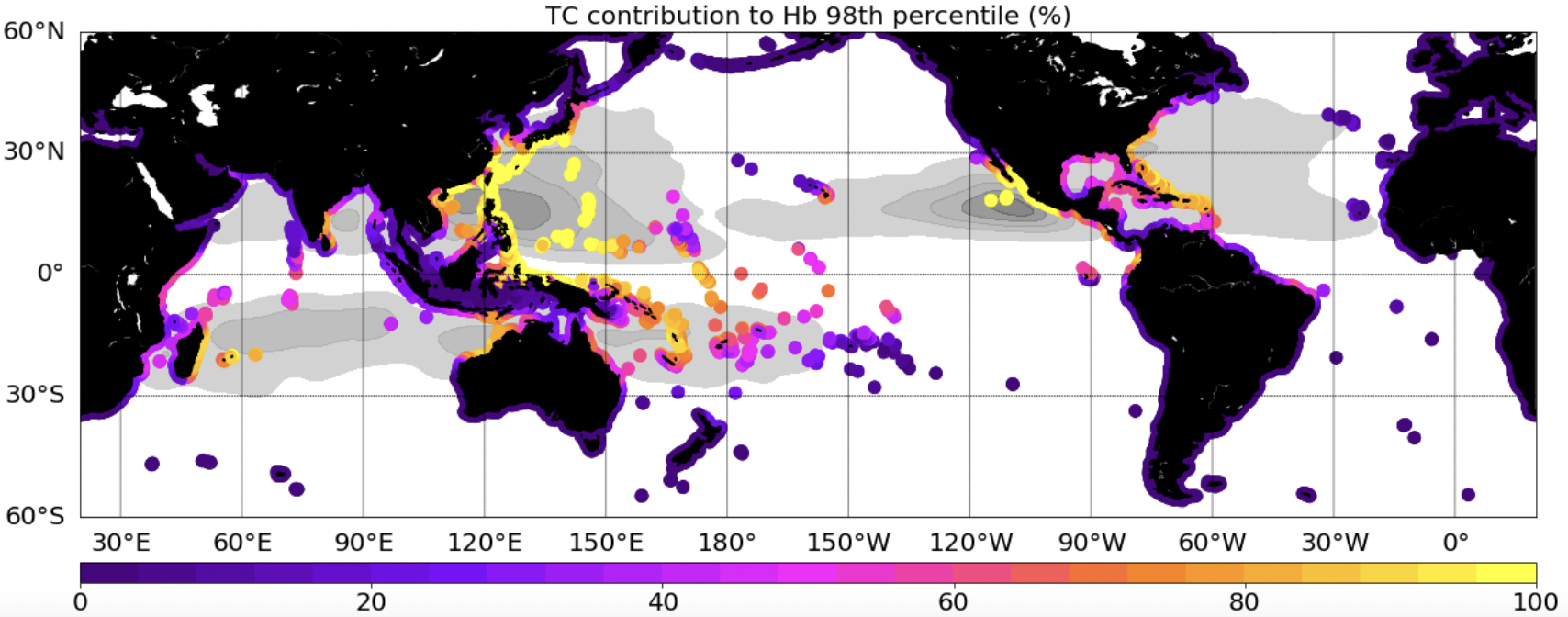Oceanographic geographical features
Type of resources
Available actions
Topics
Keywords
Contact for the resource
Provided by
Years
Formats
Representation types
Update frequencies
status
Scale
Resolution
-
Sediment Profile Images (SPIs) are commonly used to map physical, biological and chemical/nutrient gradients in benthic habitats. SpiArcBase is a software that has been developed for the analysis of Sediment Profile Images (SPIs). It has been conceived to improve the objectivity of extracted information (especially the apparent Redox Potential Discontinuity (aRPD). The software presents a graphical user interface designed to enhance the interpretation of features observed on SPIs in an objective manner and to facilitate image management and structures visualization via a data base.The software also allows for the storage of generated data and the automatic computation of a benthic habitat quality index. The facilities provided within JERICONext include access to the software through free downloading and assistance in its utilization.
-

SpiArcBase is a software developed for the treatment of Sediment Profile images (SPIs). Sediment Profile Images (SPIs) are widely used for benthic ecological quality assessment under various environmental stressors. The processing of the information contained in SPIs is slow and its interpretation is largely operator dependent. SpiArcBase enhances the objectivity of the information extracted from SPIs, especially for the assessment of the apparent Redox Potential Discontinuity (aRPD). This software allows the user to create and manage a database containing original SPIs and corresponding derived pieces of information. Once you have downloaded it, you can ask for help and stablish a helpdesk.
-

Daily air-sea heat fluxes dataset on the last 27 years (1992-2018). Global coverage with 0.25° resolution. Data is mainly coming from aggregated calibrated scatterometer datasets and numerical models. Main geophysical parameters are: sensible heat flux, latent heat flux, wind speed, SST, air temperature. Latest version : 4.1 released in June 2019.
-

This dataset provides extreme waves (Hs: significant wave height, Hb:breaking wave height, a proxy of the wave energy flux) simulated with the WWIII model, and extracted along global coastlines. Two simulations, including or not Tropical Cyclones (TCs) in the forcing wind field, are provided.
-
The MetOp First Generation (FG) is a European multi-satellite program jointly established by ESA and EUMETSAT, comprising three satellites, MetOp-A, -B and -C. The primary sensor onboard MetOp-FG, the Advanced Very High Resolution Radiometer/3 (AVHRR/3) contributed by NOAA, measures Earth emissions and reflectances in 5 out of 6 available bands (centered at 0.63, 0.83, 1.61, 3.7, 11 and 12 microns), in a swath of 2,600km from an 817km altitude. These data are collected in a Full Resolution Area Coverage (FRAC) mode, with pixel size of 1.1km at nadir. MetOp-A launched on 19 October 2006 is the first in the MetOp-FG series. The NOAA Advanced Clear-Sky Processor for Ocean (ACSPO) Level 2 Preprocessed (L2P) SST product is derived at the full AVHRR FRAC resolution and reported in 10 minute granules in NetCDF4 format, compliant with the GHRSST Data Specification version 2 (GDS2). Subskin SSTs are derived using the regression Nonlinear SST (NLSST) algorithm, which employs three bands (3.7, 11 and 12 microns) at night and two bands (11 and 12 microns) during the day. The ACSPO AVHRR FRAC L2P product is monitored and validated against quality controlled in situ data, provided by the NOAA in situ SST Quality Monitor system (iQuam; Xu and Ignatov, 2014, https://doi.org/10.1175/JTECH-D-13-00121.1 ), in another NOAA system, SST Quality Monitor (SQUAM; Dash et al, 2010, https://doi.org/10.1175/2010JTECHO756.1 ). SST imagery and clear-sky masking are continuously evaluated, and checked for consistency with other sensors and platforms, in the ACSPO Regional Monitor for SST (ARMS) system. MetOp-A orbital characteristics and AVHRR/3 sensor performance are tracked in the NOAA 3S system (He et al., 2016, https://doi.org/10.3390/rs8040346 ).The L2P Near Real Time (NRT) SST files are archived at PO.DAAC with 3-6 hours latency, and then replaced by the Re-ANalysis (RAN) SST after about 2 months later with identical file names. Two features can be used to identify them: different file name time stamps and netCDF global attribute metadata source=NOAA-NCEP-GFS for NRT and source=MERRA-2 for RAN. A reduced size (0.45GB/day), equal-angle gridded (0.02-deg resolution) ACSPO L3U product is available at https://doi.org/10.5067/GHMTA-3US28
-
A global Group for High Resolution Sea Surface Temperature (GHRSST) Level 2P dataset based on multi-channel sea surface temperature (SST) retrievals generated in real-time from the Advanced Very High Resolution Radiometer (AVHRR) on the NOAA-18 platform (launched 20 May 2005) produced and used operationally in oceanographic analyses and forecasts by the US Naval Oceanographic Office (NAVO). The AVHRR is a space-borne scanning sensor on the National Oceanic and Atmospheric Administration (NOAA) family of Polar Orbiting Environmental Satellites (POES) having a operational legacy that traces back to the Television Infrared Observation Satellite-N (TIROS-N) launched in 1978. AVHRR instruments measure the radiance of the Earth in 5 (or 6) relatively wide spectral bands. The first two are centered around the red (0.6 micrometer) and near-infrared (0.9 micrometer) regions, the third one is located around 3.5 micrometer, and the last two sample the emitted thermal radiation, around 11 and 12 micrometers, respectively. The legacy 5 band instrument is known as AVHRR/2 while the more recent version, the AVHRR/3 (first carried on the NOAA-15 platform), acquires data in a 6th channel located at 1.6 micrometer. Typically the 11 and 12 micron channels are used to derive SST sometimes in combination with the 3.5 micron channel. The NOAA platforms are sun synchronous generally viewing the same earth location twice a day (latitude dependent) due to the relatively large AVHRR swath of approximately 2400 km. The highest ground resolution that can be obtained from the current AVHRR instruments is 1.1 km at nadir. AVHRR data are acquired in three formats: High Resolution Picture Transmission (HRPT), Local Area Coverage (LAC), and Global Area Coverage (GAC). HRPT data are full resolution image data transmitted to a ground stations as they are collected. LAC are also full resolution data, but the acquisition is prescheduled and recorded with an on-board tape recorder for subsequent transmission during a station overpass. This particular dataset is produced from GAC data that are derived from an on-board sample averaging of the full resolution global AVHRR data. Four out of every five samples along the scan line are used to compute on average value and the data from only every third scan line are processed, yielding an effective 4 km resolution at nadir. Further binning and averaging of these pixels results in a final dataset resolution of 8.8 km.
-
A Group for High Resolution Sea Surface Temperature (GHRSST) Level 4 sea surface temperature analysis produced daily on an operational basis at the UK Met Office using optimal interpolation (OI) on a global 0.054 degree grid. The Operational Sea Surface Temperature and Sea Ice Analysis (OSTIA) analysis uses satellite data from sensors that include the Advanced Very High Resolution Radiometer (AVHRR), the Spinning Enhanced Visible and Infrared Imager (SEVIRI), the Geostationary Operational Environmental Satellite (GOES) imager, the Infrared Atmospheric Sounding Interferometer (IASI), the Tropical Rainfall Measuring Mission Microwave Imager (TMI) and in situ data from ships, drifting and moored buoys. This analysis was specifically produced to be used as a lower boundary condition in Numerical Weather Prediction (NWP) models. This dataset adheres to the GHRSST Data Processing Specification (GDS) version 2 format specifications.
-
A global 1 km Group for High Resolution Sea Surface Temperature (GHRSST) Level 2P dataset based on multi-channel sea surface temperature (SST) retrievals generated in real-time from the Advanced Very High Resolution Radiometer (AVHRR) on the European Meteorological Operational-A (MetOp-A)satellite (launched 19 Oct 2006). The European Organization for the Exploitation of Meteorological Satellites (EUMETSAT), Ocean and Sea Ice Satellite Application Facility (OSI SAF) is producing SST products in near real time from Metop/AVHRR. Global AVHRR level 1b data are acquired at Meteo-France/Centre de Meteorologie Spatiale (CMS) through the EUMETSAT/EUMETCAST system. SST is retrieved from the AVHRR infrared channels (3.7, 10.8 and 12.0 micrometer) using a multispectral algorithm. Atmospheric profiles of water vapor and temperature from a numerical weather prediction model, together with a radiatiave transfer model, are used to correct the multispectral algorithm for regional and seasonal biases due to changing atmospheric conditions. This product is delivered at full resolution in satellite projection as metagranule corresponding to 3 minutes of acquisition. The product format is compliant with the GHRSST Data Specification (GDS) version 2.
-
A regional Group for High Resolution Sea Surface Temperature (GHRSST) Level 2P dataset based on multi-channel sea surface temperature (SST) retrievals generated in real-time from the Advanced Very High Resolution Radiometer (AVHRR) on the NOAA-17 platform (launched 24 June 2002) produced and used operationally in oceanographic analyses and forecasts by the US Naval Oceanographic Office (NAVO). The AVHRR is a space-borne scanning sensor on the National Oceanic and Atmospheric Administration (NOAA) family of Polar Orbiting Environmental Satellites (POES) having a operational legacy that traces back to the Television Infrared Observation Satellite-N (TIROS-N) launched in 1978. AVHRR instruments measure the radiance of the Earth in 5 (or 6) relatively wide spectral bands. The first two are centered around the red (0.6 micrometer) and near-infrared (0.9 micrometer) regions, the third one is located around 3.5 micrometer, and the last two sample the emitted thermal radiation, around 11 and 12 micrometers, respectively. The legacy 5 band instrument is known as AVHRR/2 while the more recent version, the AVHRR/3 (first carried on the NOAA-15 platform), acquires data in a 6th channel located at 1.6 micrometer. Typically the 11 and 12 micron channels are used to derive SST sometimes in combination with the 3.5 micron channel. The NOAA platforms are sun synchronous generally viewing the same earth location twice a day (latitude dependent) due to the relatively large AVHRR swath of approximately 2400 km. The highest ground resolution that can be obtained from the current AVHRR instruments is 1.1 km at nadir. AVHRR data are acquired in three formats: High Resolution Picture Transmission (HRPT), Local Area Coverage (LAC), and Global Area Coverage (GAC). HRPT data are full resolution image data transmitted to a ground stations as they are collected. LAC are also full resolution data, but the acquisition is prescheduled and recorded with an on-board tape recorder for subsequent transmission during a station overpass. GAC data provide daily subsampled global coverage recorded on tape recorders and then transmitted to a ground station. This particular dataset is derived from LAC data. Further binning and averaging of the 1.1 km LAC pixels results in a final dataset resolution of 2.2 km. The coverage of the LAC data can vary but generally contains scenes over the oceans adjacent to Australia and the North Indian Ocean.
-
A Group for High Resolution Sea Surface Temperature (GHRSST) Level 4 sea surface temperature analysis produced daily on an operational basis at the Office of Satellite and Product Operations (OSPO) using optimal interpolation (OI) on a global 0.054 degree grid. The Geo-Polar Blended Sea Surface Temperature (SST) Analysis combines multi-satellite retrievals of sea surface temperature into a single analysis of SST. This analysis uses both daytime and nighttime data from sensors that include the Advanced Very High Resolution Radiometer (AVHRR), the Visible Infrared Imager Radiometer Suite (VIIRS), the Geostationary Operational Environmental Satellite (GOES) imager, the Japanese Advanced Meteorological Imager (JAMI) and in situ data from ships, drifting and moored buoys. This analysis was specifically produced to be used as a lower boundary condition in Numerical Weather Prediction (NWP) models. This dataset adheres to the GHRSST Data Processing Specification (GDS) version 2 format specifications.
 Catalogue PIGMA
Catalogue PIGMA